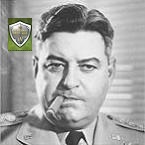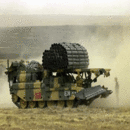Curtis Lemay
Posts: 12969
Joined: 9/17/2004
From: Houston, TX
Status: offline

|
quote:
ORIGINAL: ColinWright
Still -- this is similar to the flaw with conventional airborne movement. The ranges can get totally unrealistic, depending on the scale, the era, and the type of equipment available.
I usually work with Ju-52's. For some scenarios, the figures can be reasonable -- either that, or it's academic, as the whole map is within Ju-52 range. On the other hand, with Jeremy's Fall Grau the scale leads to some truly awesome jumps, and for my Operation Orient I'm definitely going to need some house rules.
It shouldn't be too hard to at least make these values adjustable by event -- even if we can't have actual transport units.
Actually, its different. Helicopter transfer ranges are fixed at 200km, regardless of turn interval. While we could argue about the exact figure to use, the principle is sound.
Airborne ranges, on the other hand, are based upon movement allowances, so they rise and fall with turn interval. This is obviously incorrect. The range should be independent of turn interval. They should be like the combat ranges of aircraft, instead of like the movement allowances of aircraft. I've argued elsewhere that airborne ops should be carried out like combat instead of movement, and fixing this factor would be part of that change.
Fall Grau has whole-week turns, so the drop range is equal to how far an air unit could transfer in a week. Obviously, that transfer distance would include multiple stops on the way (no plane stays in the air for a week), and is incorrect for use as a drop range.
|
 Printable Version
Printable Version








 Dutch
Dutch

 The traffic back and forth on the TransHelo's has been quite helpful, though I'm still not getting the results from my own playing.
The traffic back and forth on the TransHelo's has been quite helpful, though I'm still not getting the results from my own playing.  . I've gone to the Korean campaign and, as well, ventured into early stages of modern conflicts vetting my mistakes.
. I've gone to the Korean campaign and, as well, ventured into early stages of modern conflicts vetting my mistakes. 


 New Messages
New Messages No New Messages
No New Messages Hot Topic w/ New Messages
Hot Topic w/ New Messages Hot Topic w/o New Messages
Hot Topic w/o New Messages Locked w/ New Messages
Locked w/ New Messages Locked w/o New Messages
Locked w/o New Messages Post New Thread
Post New Thread